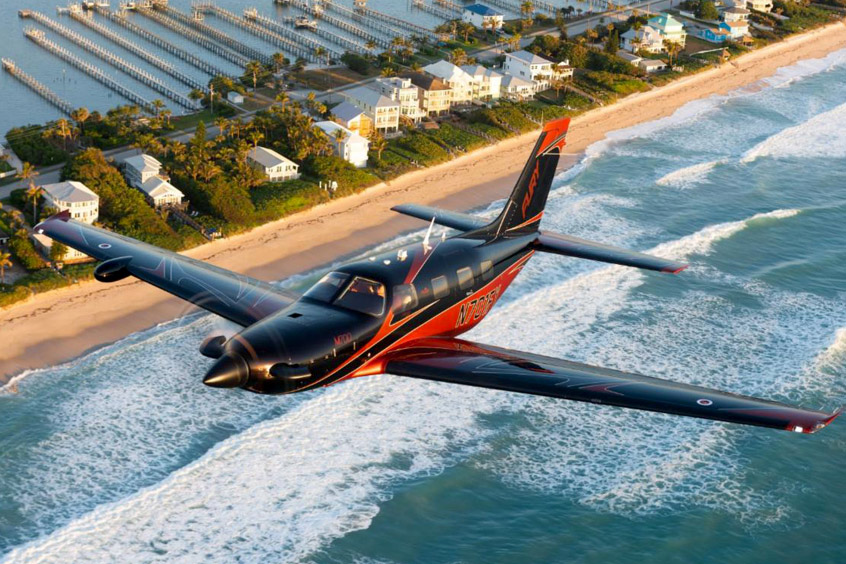Tracing the Legacy and Advances of Piper Meridian
The Piper Meridian has long been a significant player in the general aviation landscape, marrying the elegance of a single-engine aircraft with the performance and versatility that pilots and owners have come to expect from the Piper brand. Since its introduction, the Meridian has not only captured the imagination of aviators but also demonstrated remarkable technological advances. This article delves into the impact of the Piper Meridian on aviation and explores the innovations and enhancements that have kept it relevant over the years.
Tracing Piper Meridian’s Impact on Aviation

The Piper Meridian made its debut in the late 1990s, marking a significant milestone for Piper Aircraft as it ventured into the realm of turboprop aircraft. As a single-engine turboprop, the Meridian filled a unique niche, appealing to pilots who sought a balance between the operational efficiency of smaller aircraft and the performance capabilities typically associated with larger, more powerful models. This aircraft quickly gained popularity among private owners, charter operators, and corporate fleets, showcasing its versatility and reliability across various sectors of the industry.
One of the key impacts of the Piper Meridian on aviation has been its role in democratizing access to high-performance, turbine-powered flight. Before the Meridian, turboprop aircraft were often out of reach for many due to cost and complexity. By offering a more affordable and user-friendly option, Piper enabled a broader segment of pilots to experience the benefits of turbine power, such as higher speeds, greater range, and the ability to operate from shorter runways. This accessibility has not only expanded the market for turboprop aircraft but also fostered a new generation of pilots familiar with turbine operations.
Moreover, the Piper Meridian has influenced how manufacturers approach design and innovation in aircraft development. Its successful integration of advanced avionics and efficient engine technology set a precedent for blending modern engineering with practical functionality. As such, the Meridian has sparked a wave of innovation in the general aviation sector, encouraging other manufacturers to focus on improving performance and efficiency while maintaining affordability. This has led to a competitive market where continuous improvement is the norm, ultimately benefiting the aviation community as a whole.
Innovations and Enhancements Over the Years

Since its initial launch, the Piper Meridian has undergone a series of upgrades and enhancements, each iteration building upon the last to deliver improved capabilities and a more refined flying experience. Early modifications centered on avionics, with Piper integrating state-of-the-art glass cockpit technology. This transition from traditional analog instruments to digital displays enhanced situational awareness, reduced pilot workload, and increased safety. As avionics technology continued to advance, subsequent models of the Meridian incorporated even more sophisticated systems, including weather radar, terrain awareness, and traffic collision avoidance systems.
In addition to avionics, the Meridian has benefited from engine and aerodynamic improvements. The aircraft’s Pratt & Whitney PT6A-42A engine has consistently been at the heart of these enhancements. Continuous refinements to the engine have resulted in better fuel efficiency, increased reliability, and extended maintenance intervals, thereby reducing operating costs for owners. Aerodynamic updates have also played a crucial role in the Meridian’s evolution, allowing for smoother flight profiles and improved handling characteristics, which contribute to a more enjoyable and efficient flying experience.
These innovations have culminated in the latest iteration of the Piper Meridian, known as the Piper M600/SLS. This model represents the pinnacle of the Meridian lineage, featuring the revolutionary Garmin Autoland system, which allows the aircraft to land autonomously in the event of an emergency. This groundbreaking technology underscores Piper’s commitment to safety and innovation, setting a new standard in general aviation. The M600/SLS also boasts enhanced cabin comfort, increased payload capacity, and extended range, making it a versatile choice for both personal and business aviation needs. These advancements ensure that the Piper Meridian remains a leader in its class, continually pushing the boundaries of what is possible in single-engine turboprop aircraft.
The legacy of the Piper Meridian within the aviation industry is marked by its pioneering spirit and continual advancement. From its inception as an accessible turboprop option to its current status as a technological leader with the M600/SLS, the Meridian has consistently pushed the envelope in terms of performance, innovation, and safety. As the aviation landscape continues to evolve, the Piper Meridian stands as a testament to the enduring impact of well-crafted design and forward-thinking enhancements, ensuring its place in the annals of aviation history for years to come.



